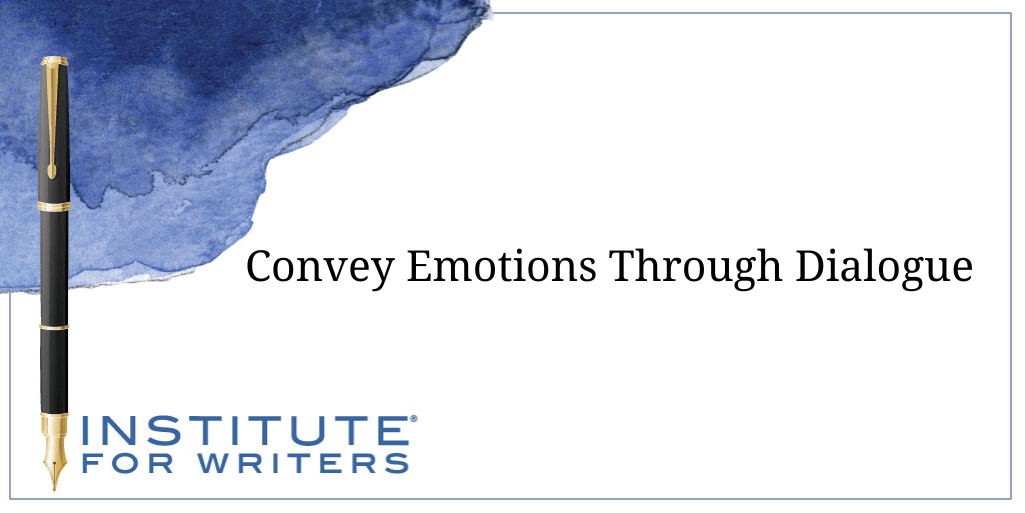
Influential Female Authors: Past, Present, and Rising
We’re going to look at influential female authors of the past, those impacting the present, and whom the industry expects to make a big splash.

Think about your favorite books, those stories that kept you engrossed till the end. When they did end, you probably wanted to read more works by those authors, because their writing touched your emotions.
 Same Situation/Individual Responses
Same Situation/Individual Responses“Know your character” is a basic tenet for writers. Suppose two friends are hiking through the woods when suddenly they realize they’re lost? Here’s what five different characters might say:
“I can’t believe I let you talk me into this stupid hike!”
“God help us. How will we ever get out of this maze?”
“Let’s think. There’s no cell service here, but we could try retracing our steps and figure out directions from the sun…”
“This will make an awesome story to tell our friends, huh?”
“I hope our families don’t hear we’re lost before we find a way out of here. They’d be so worried.”
What can you tell about the personality and feelings of each character? We see anger, frustration, fear, calm determination, worry, concern for others. The fourth response could be an attempt at optimism, or perhaps this character uses humor to cope with fear and nervousness.
How might these hikers’ feelings—and thus their dialogue—change over time? After their immediate response, the character who was angry might stay angry, become angrier, grow dejected, or even apologize. The hopeful character might remain that way, or become discouraged, panicky, resentful. Feelings of frustration or despair could turn to relief and joy once they’re safe.
 Even on ordinary days, people experience diverse emotions, including mixed emotions, in response to different events. Dialogue (both spoken and in characters’ thoughts) can help to make emotional transitions. Here, a character goes from apprehension to relief to confusion/concern.
Even on ordinary days, people experience diverse emotions, including mixed emotions, in response to different events. Dialogue (both spoken and in characters’ thoughts) can help to make emotional transitions. Here, a character goes from apprehension to relief to confusion/concern.
Chad held his breath as the boss announced who would present their research paper at the conference. Whew! He smiled at Ray. “You’ll be great. Me, I hate talking to large groups.” But—what did this mean? Maybe the boss thinks I’m incompetent…
Considering your character’s special traits can lead to dialogue that reveals emotions in vivid ways. Suppose a character feels deep loss and loneliness and yearns for an escape. They could say, “I feel lonely and lost. I want to get away somewhere.” Those words state the facts but don’t create strong feelings inside the reader. Compare that to these words from “River,” by songwriter Joni Mitchell: “I wish I had a river I could skate away on.” Mitchell’s song is set during wintry December, and she grew up in Canada, where ice-skating is prevalent. The image of a lone skater on a long, frozen river reflects the speaker’s mood and background.
Likewise, watch for clichés. In real life, people do use clichés, especially short, sincere phrases for common situations (“I love you.” “Thanks so much.” “I’m sorry.”) Clichés also suit certain characters. But avoid familiar “media clichés,” especially when characters feel complex emotions. Examples: “Make my day.” “You complete me.” “— is my middle name.” Readers might think about the film where they heard the cliché instead of your character’s feelings.
 Inside Story
Inside StoryLots of dialogue goes on inside our heads, so characters’ thoughts are important. Expressing those thoughts as internal dialogue lets readers hear characters talking to themselves. Internal dialogue occurs in the moment, so use present tense and first-person narration. For example, a character in the hiking scenario might think, It’s up to me; he’s too upset to think straight. But for once in my life, I’d like to fall apart and let someone else fix things.
When thoughts and words are contradictory, we can dramatize conflict in a scene—internal conflict, conflict between characters, or both. This internal dialogue shows the speaker’s true feelings: “I’m sorry, Vera. We’re busy Saturday and can’t come to your party.” Lanelle flashed a regretful smile. I can’t stand another evening of Vera’s cooking experiments and Dirk’s bragging.
A character’s actions and body language can amplify the emotion, add something new, or contradict their words. While viewpoint characters won’t see themselves from the outside, we can show things within the character’s awareness, such as biting their lips or shrugging.
During lively action scenes or emergencies, people tend to speak faster, using fewer words. Suppose your characters just discovered a fire in their garage: “I’ll call 9-1-1!” “Grab the extinguisher.” “Don’t get too close!”
 Characters grieving a death would likely speak more slowly, pause more often, and repeat things. Dialogue between two friends might go like this
Characters grieving a death would likely speak more slowly, pause more often, and repeat things. Dialogue between two friends might go like this
“I can’t believe Jan is gone. I mean, she just got sick last month, and now—”
“I’m so glad I could visit with her before she went to the hospital. We ate lunch in her garden. You know how she loved her garden.”
“We all did. So beautiful, and peaceful.”
“Her peonies were blooming, and Maisy was running on the grass, barking at squirrels.”
“Maisy …she… she must be sad. And confused. Will Jan’s sister take her? You know, Jan planned to adopt another rescue dog. How I’ll miss her.”
“Such a loss. A huge loss for all of us.”
This scene would lack feeling if the characters just stated their main thoughts. In an actual story, we’d sprinkle in action, body language, physical sensations, and internal dialogue. The main character (MC) might feel an ache in her throat. The friend’s voice might wobble when she talks about the dog.
Enough emotion is enough, and too much is … too much. An example: “I’ll never, ever, EVER, forgive you as long as I live!” he raged shrilly, red-faced, banging his fists loudly on the table for emphasis.
Numerous different speaker tag words can distract readers and distance them from the character’s emotions. Instead, they’ll notice the author’s vocabulary, as the characters respond, reflect, assert, affirm, conjecture, muse, suggest, persist, etc. “Said” is a reliable staple for most dialogue. It fades into the background so that readers focus on characters and action.
Along with other writing skills, we can learn to craft dialogue that brings characters’ emotions to life. Our own emotions can help us on that journey. As Robert Frost once said, “No tears in the writer, no tears in the reader.”
Victoria Sherrow has published short stories, articles, poetry, and books for ages preschool through adult. Her books have received starred reviews and been honored by the American Library Association, Parents Choice Gold Award, National Association for the Advancement of Science, and NYPL Best Books for the Teenage, among others. An avid reader and writer since childhood, she loves helping her students tap into their unique life experiences and writing styles to create their own stories and books.

We’re going to look at influential female authors of the past, those impacting the present, and whom the industry expects to make a big splash.

This week, we’re focusing on how we as writers can create strong female characters that others will look up to, instead of harmful stereotypes.

Is your writing routine reaching its potential? Maybe it’s time to take another look so you can see what’s possible for your writing.
1000 N. West Street #1200, Wilmington, DE 19801
© 2024 Direct Learning Systems, Inc. All rights reserved.

1000 N. West Street #1200, Wilmington, DE 19801
© 2025 Direct Learning Systems, Inc. All rights reserved.

1000 N. West Street #1200, Wilmington, DE 19801
©2025 Direct Learning Systems, Inc. All rights reserved. Privacy Policy.